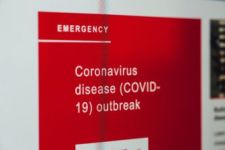
I remember 9/11 well. I was walking quickly on Bowdoin Street to check on my students when I noticed out of the corner of my eye that the security guards were in their kiosk watching TV when a 2nd plane flew into the WTC. I knew this was the 2nd plane as I had just heard on the radio only minutes before that a plane, from Logan, had flown into the WTC and that both planes had left from Boston. I walked even more quickly trying to get to my students. When I arrived on the 5th floor of the Donahue building, my students were sitting in their desk chairs calmly talking to each other. I was stunned as I partly expected no one to be there and to find the classroom empty.
I asked as calmly as I could, my heart pounding a million miles an hour: Did you hear about the two planes that just crashed into the WTC? To my shock and horror, they said in unison: Yes! Trying to compose myself, I asked: Then, why are you here? Twenty third- and fourth-year college students looked at each other and with open mouths and went silent. This was a surreal moment and time virtually stopped.
In what felt like minutes, but was likely seconds, one student finally said: What do you mean? I then thought, maybe they don’t know that the planes left from Boston, so I answered: Do you know where the planes left from? Oh, yes, said another student: …from Logan Airport. The remaining students nodded quickly in agreement. Hmmm, I thought, they all know what I perceived to be a vital piece of information and yet, here they sit, utterly unfazed.
LEAVE, I said. They looked at each other. No one moved. Again: I. said. leave. They continued looking back and forth at each other and I realized at that moment we were in the middle of the psychology of an emergency. Their critical thinking was slowing down, they were not believing that this was an emergency and they did not know what to do, all very common reactions in an emergency. Moments later, one student asked me: Where should we go? I pointed to the window and said: See that building, that’s the State House, not a safe place for us to be right now. Walk away from that building, walk in the opposite direction and walk until you can’t walk any further. One student said: ..but that will take us to the bridge. Good, I said, then cross that bridge.
Standing at the open door and gesturing for them to get up, they finally gathered up their bags and left the building. I went down the hallway of that building and had almost the same conversation in multiple rooms where I found people. I had a similar conversation with the IT person who was attempting to fix my computer. He argued with me, telling me everything was ok, I said: I don’t want you to fix my computer, get out of my office, now. He sat, looking perplexed at me. I said it again and he finally got up and left.
When I found no one else, I left the building and walked as fast and as far away from the State House as I could.
People went into shock when 9/11 happened, and began to shut down, their thoughts, their feelings and their bodies, not at all uncommon in an emergency.
We are in a similar situation today!
Many are now acting like my students on that fateful day in 2001. People cannot comprehend that we are in the midst of a global emergency. Usually, political and moral leaders provide guidance to wake people from the shock response and give direction on what actions to take. Sadly, we have little leadership happening during this Cornavirus outbreak that is rivaling the 1918 Spanish flu.
Leaders need to be telling people that the yearly flu kills 1.01% of people who get the flu, that the Spanish flu killed 40 million people representing 2.4% of those infected and that the Cornavirus is more deadly killing approximately 3.5% of those infected. Those leaders need to say who is most at risk so that people can protect themselves, so that first responders can prepare for the inevitable infections of those most vulnerable, so that supplies and hospitals can be prepared, so that non-vital travel would slow thereby slowing the virus down. By acknowledging what is happening we could prevent unnecessary deaths.
For more information on the Psychology of a crisis
https://emergency.cdc.gov/cerc/ppt/CERC_Psychology_of_a_Crisis.pdf